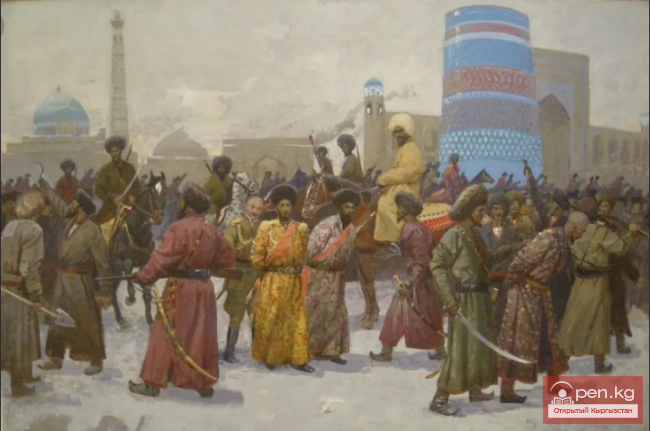
The Anti-Feudal and National-Liberation Character of the Uprising of 1873-1876.
"Kyl-kuyruk" Abdurakhman Aftobachi, who had recently returned from Mecca, where he went on pilgrimage, Isa-Auliye, known for his religious fanaticism, and other representatives of the feudal nobility, in an attempt to use the workers' protests for their own interests and direct it along an anti-Russian path, declared a jihad, i.e., a holy war against the "infidels" in August 1875, at the beginning of the second stage of the uprising. These individuals and other















































